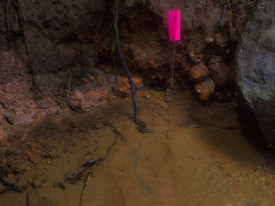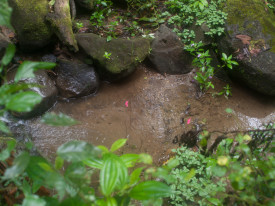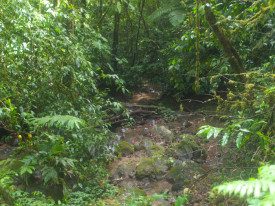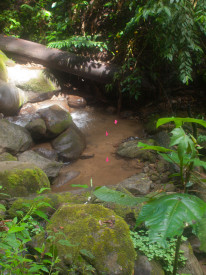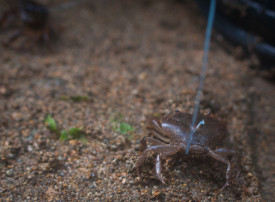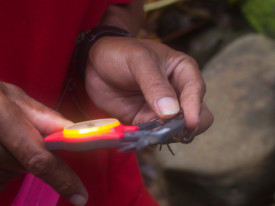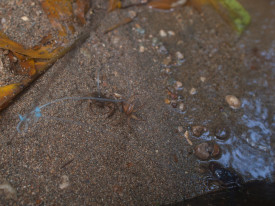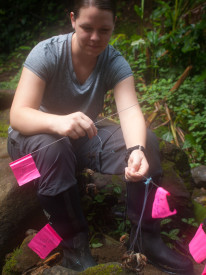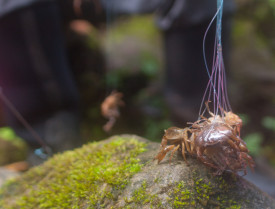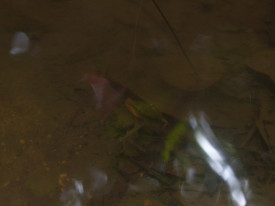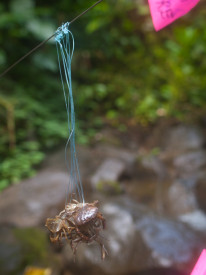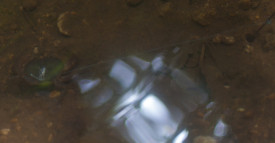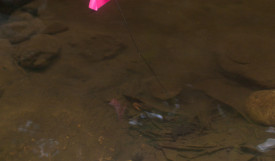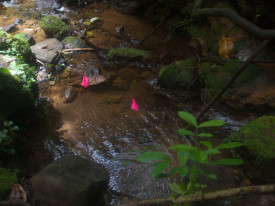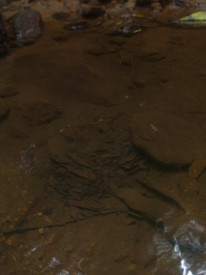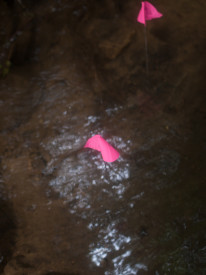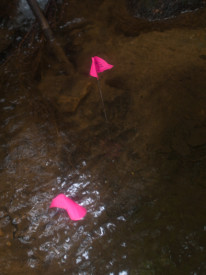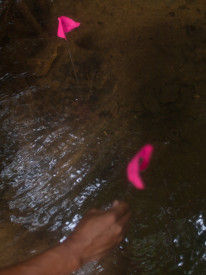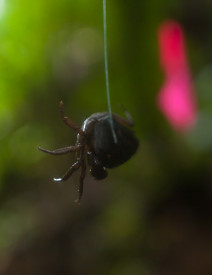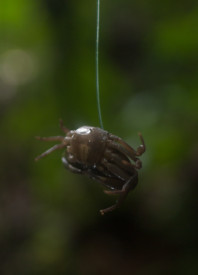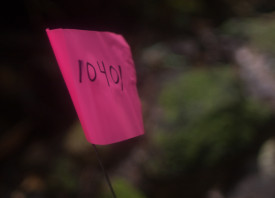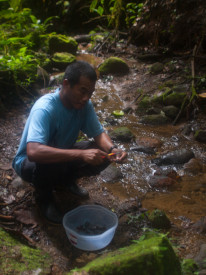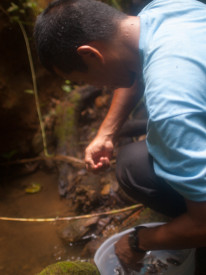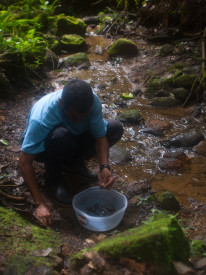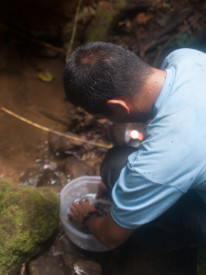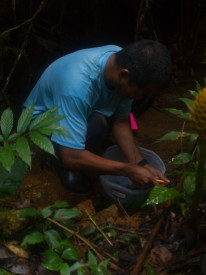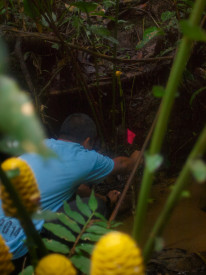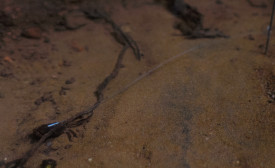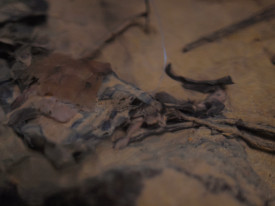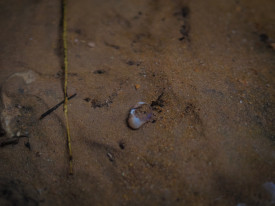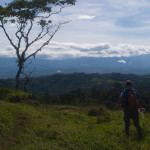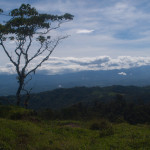Jerry, one of my NAPIRE students from Pohnpei, Micronesia, is investigating pseudothelphusidae crab (Allacanthos pittieri) populations at the Las Cruces Biological Station this summer. His study has two major components: (1) measuring crab densities in areas that vary in the amount of leaf litter present (i.e., high and low leaf litter densities), and (2) assessing predation risk in high and low leaf litter areas (after Jenn Clark’s crayfish study; Clark et al. 2013 Hydrobiologia). Jerry hopes to demonstrated higher crab densities and lower predation risk in areas of high leaf litter because crabs are able to use the leaves as refuge and a source of food, both directly, as they are shredders, and indirectly by preying on other invertebrates in the leaf litter.
Here, Jerry has tethered crabs using monofilament fishing line to flagging in about 20 stream pools. The crabs were paired in pools and restricted to either high leaf litter sections or low leaf litter sections of each pool site.

